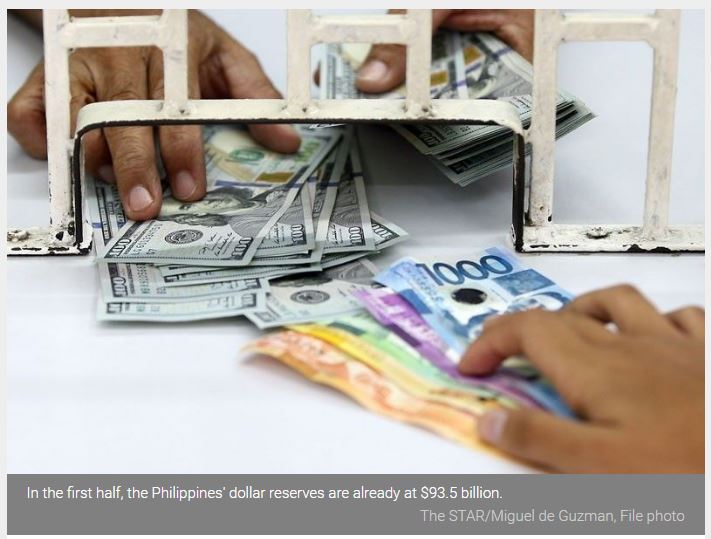Philippines’ higher dollar stock this year is not entirely good news
MANILA, Philippines — The Philippines is likely to register a higher dollar surplus this year, but this is not all good news as doing so also meant demand that drives outflows would remain tepid and the economy weak.
Overseas remittances would drop slower and so do foreign investments, which in turn meant more dollars would enter the economy than originally expected. At the same time however, imports would continue to implode, suggesting little reason for traders to bring in goods while consumers stay at home.
Such is reflected in the latest central bank forecasts for balance of payments, which summarizes all inflows and outflows in an economy. For this year, BOP is seen hitting a surplus of $8.1 billion, up from $7.8 billion a year ago and more than eight-fold the $600 million seen last May.
“(U)ncertainty over the duration, direction and extent of the impact of the COVID-19 pandemic continue to cast a shadow over future economic growth prospects both at home and abroad,” the Bangko Sentral ng Pilipinas (BSP) said in a statement.
Among BOP components, remittances from Filipinos abroad will shrink at a softer pace of 2% annually this year from 5% projected in May “as host economies started to reopen,” BSP said. Inflows went down 2.4% as of July.
Dollars would also in the form of foreign direct investments now seen at $5.6 billion net inflow, up from $4.1 billion initially. As of July, FDI amounted to $3.8 billion.
But more broadly, remittances and FDI are still expected to go down year-on-year and therefore strictly speaking, less dollars would be entering the Philippines from these segments. What analysts believed contributed highly to better BOP projections are lackluster imports poised to contract a fifth from last year.
“Import fall means $25 billion to $30 billion drop in outflows versus 2019 (level)…The BOP surplus/record GIR narrative can backfire,” Emilio Neri Jr., lead economist at Bank of the Philippine Islands, said in a tweet.
Nicholas Antonio Mapa, senior economist at ING Bank in Manila, agreed with Neri. “The trade deficit has shrunk substantially due mainly to import implosion, which translates to fading potential output or GDP (gross domestic product) down the line,” he said in an e-mail.
Why this matters
In recent past, Philippines would import large amounts of capital goods for its infrastructure building. Doing so meant traders are shelling out dollars to purchase these goods, but with expectations that raw materials acquired are used for investments.
When the pandemic struck last March, and lockdowns disrupted daily living, imports began to sink as projects were put on hold, while other imports like food take a pause because demand is not picking up existing supplies. The result was dollars from other sources like remittances piling up in the country’s foreign reserves.
Indeed, BSP now expects gross international reserves (GIR) to hit an all-time high of $100 billion by yearend but Sanjay Mathur, economist at ANZ Bank, expect them to be larger. As of August, the buffer funds stood at $98 billion.
“Having record GIR is good if dollar receipts are also at all-time highs, but if its due to a record drop in imports, the spin might be difficult to sustain,” Neri said in a tweet.
“Demand recovery (is) more crucial,” he pointed out.
Other dollar inflows stable if not worse
The scenario gets more problematic if one considers that other dollar sources are not expected to pitch in more. From May, BSP kept the 16% annual drop projected for exports. Growth in earnings from business process outsourcing was also retained at 2%.
Tourism receipts, meanwhile, are likely to fall 65% year-on-year, worse than the 56.9% seen last May.
Source: https://www.philstar.com/business/2020/10/14/2049529/philippines-higher-dollar-stock-year-not-entirely-good-news


 Thailand
Thailand




